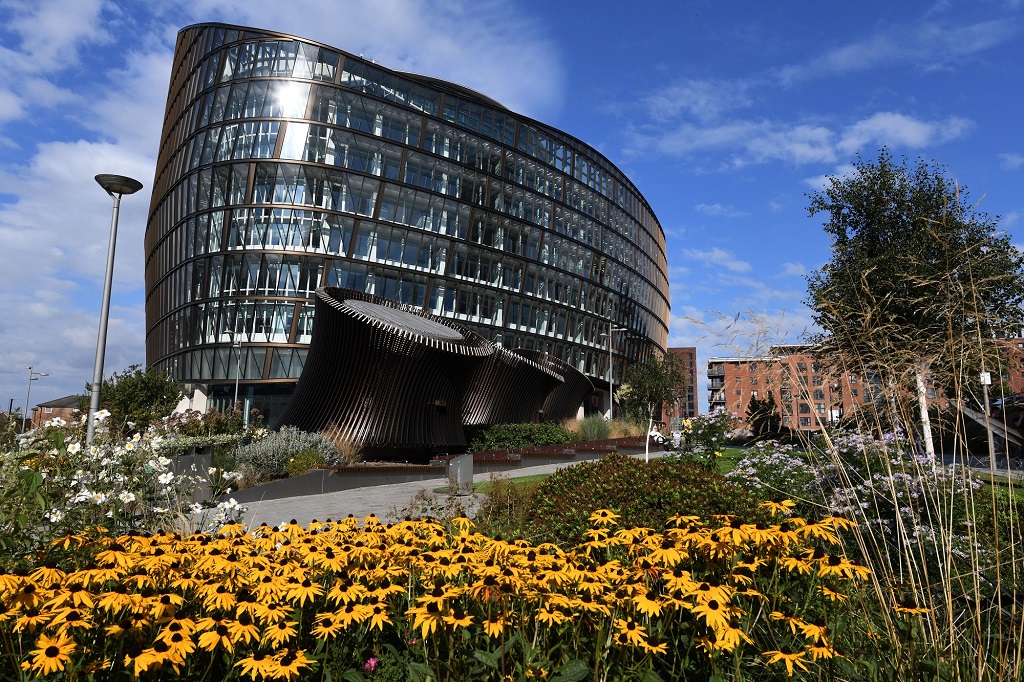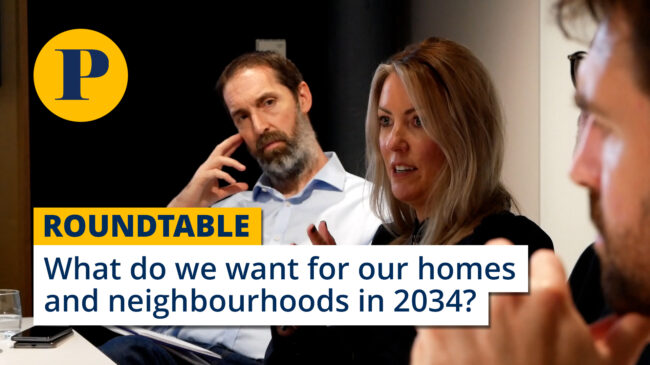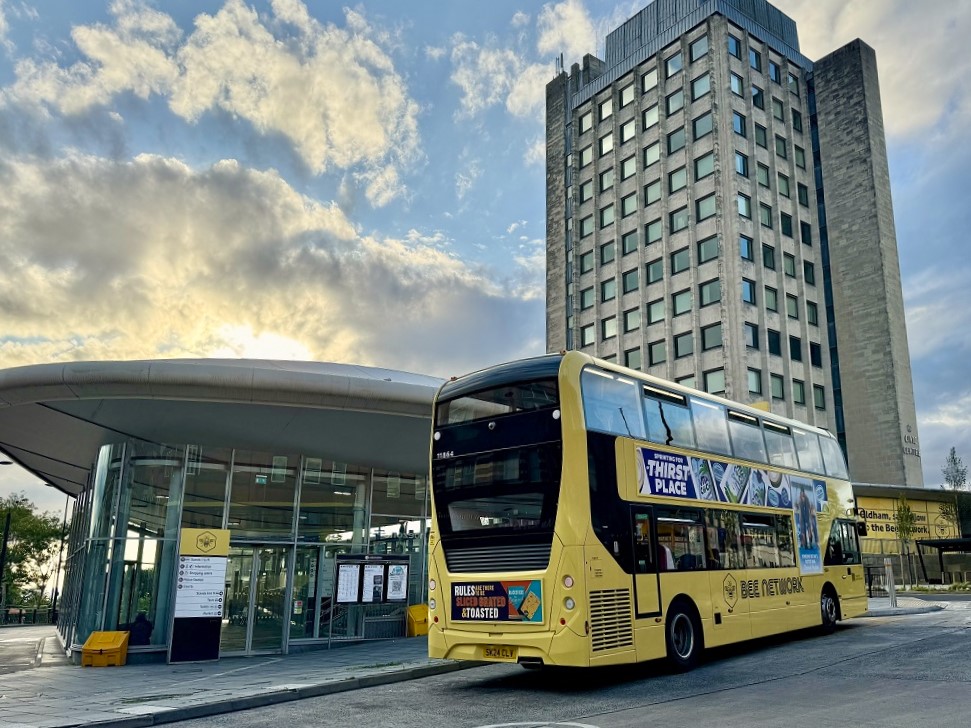The Subplot
The Subplot | The billion pound question, hot sheds, babies
Welcome to The Subplot, your regular slice of commentary on the North West business and property market from Place North West’s analysis editor, David Thame.
THIS WEEK
- The £1bn question: money is pouring into North West real estate, but for how much longer? Answer: a while yet
- Elevator pitch: your weekly rundown of who and what is going up, and who is heading the other way

The £1BN QUESTION
Money makes the world go round
Something like £1bn was in play in the North West office market between 30 May and today. That’s a lot. And it (probably) isn’t going to stop.
Between late May and end of June, and counting only the big money office market projects, a total of £476.5m was offered for sale (or sold) in central Manchester. If we stretch back to mid-May the total rises to £584m. Liverpool has also seen some mighty transactions, and if you cared to add up the region’s big leisure deals, shed deals and miscellaneous re-financings, the last five or six weeks would easily account for £1bn of property investment. All of it from big names and all of it deadly serious.
Big deep breath
The full list is: the German-led consortium that owns One Angel Square offers the 330,000 sq ft building for £210m, a yield of 5.17%. A short walk away, Castlebrooke Investments markets the CIS Tower (since rebranded Society) for £150m. Aviva is offering the Corn Exchange for £43m and Derwent has put Cardinal House at St Mary’s Parsonage up for sale for £13.5m (with the prospect of a beefy 140,000 sq ft development ahead). Grosvenor bought Ardstone Capital’s Ship Canal House off King Street for about £30m; and CEG is selling the 63,000 sq ft office building at 196 Deansgate for £30m.
And another deep breath
These deals following Helical’s £34.5m sale of Trinity off John Dalton Street, and Abrdn’s decision to sell Number One First Street for £73m. In Liverpool, Forma Real Estate picked up No5 St Paul’s Square from Abrdn for around £35m. The deal reflects a net initial yield of 6.5%.
Yields! Yields! Yields!
The yields are interesting and hover a shade above 5% with the Helical disposal of Trinity taking the prize with a net initial yield of exactly 5% (Mayfair Capital was the buyer). That Angel Square yield is fiercely hot, too, though not the hottest Manchester has ever seen. On the face of it, this scorching performance is difficult to reconcile with inflation soaring, GDP growth rates tumbling, and retail spending on the way down. Big money is looking past all this local turbulence – separating the signal from the noise, if you like – and has decided it can see/hear something much more encouraging. It’s also decided 5% for an office yield isn’t bad – which it isn’t, compared with London or even some local precedents.
Trench not delta
The simple logic is that, post-pandemic and post-inflation shock (so 2024) we’re all going to want the best. A huge amount of capital on one side, and occupier interest on the other, what might otherwise have been dispersed across the market is now concentrating on a smaller range of property options. Instead of an office market like the Nile delta (miles wide, but only feet deep) we’re going to get the Mariana Trench (fathoms deep, but very narrow). More money chasing less product means yields compressing (5% will seem generous fairly soon), and rents rising.
Norwegian blues
Colliers reckons the all-important gap between property yields and super-sensitive Treasury gilts will land at about 270pbs. Which is 270 good reasons to keep pouring money into real estate. And yes, of course, a re-pricing is in progress. This week Norges Bank Investment Management pulled the anticipated £720m of a mighty office block in the City of London. Apparently offers didn’t quite meet their expectations. It’s a huge deal, a huge story, but don’t get too alarmed: the yield was 4% which is keen in anyone’s book, and the City of London has not come out of the pandemic looking good, so one could blame local factors. Even so, it’s a blow to market confidence and comes as other deals begin to move with ominous lack of speed.
Catching a cold
Thus far big re-pricing of the kind Norges didn’t like hasn’t been apparent in the North West, but that’s probably because regional pricing is a bit less giddy. Aside from these niggles the big money has, mostly, convinced itself that inflation is a temporary thing, a bad cold that will soon be over. Most of them also think they are clever enough to adapt their strategy to cope. They could be wrong on both counts. For now they feel justified: investment volumes in the year to date are more than 10% above average, although activity slowed in April and May, Colliers said.
Waiting and watching
If the huge volume of investment activity in the North West is any guide, the market is as perky as ever. What we don’t yet know is whether everyone will get the prices they want. If and when the region gets its own Norges-style pull-out will be the moment to re-think.
 ELEVATOR PITCH
ELEVATOR PITCH
Going up, or going down? This week’s movers
Some weeks, everything feels beautifully symmetrical. The population goes up, but the warehouses needed to feed and clothe them go down.
 The population
The population
One rough-and-ready measure of economic success goes like this: does anyone want to live in your town? If your population goes up then, unless your population is unusually prone to accidental births or large families, it normally means there’s a successful economy to encourage and support the growth.
Earlier this week the first results of the 2021 Census emerged, and they tell an interesting story. The North West’s only serious population growth story was the City of Salford, up a very impressive 15.4% since 2011. A few places in England managed more – fast-growing Bedford, and the Covid escape hatch of the Cotswolds scored higher – but it is a stand-out performance. City of Manchester was up 9.7%.
Going the other way is Blackpool, down 0.2%, and the Cumbrian coast (down as much as 5%). Many other North West locations did well on first glance – Liverpool scored a 4.4% increase – but that needs contrasting with the England increase of 6.6% and the North West average of 5.2%.
More data will appear later this year, much of it bearing directly on skills and economic potential. It will be interesting to see if it bears out the population data trends.
 Warehouses of the future
Warehouses of the future
Something like half of the North West’s warehouses are about to become useless – legally useless – unless somebody does something soon. This conclusion, reached by surveyor Gerald Eve, could mean massive economic disruption, job losses and unhappiness, and ought to be ringing politicians biggest reddest alarm bells. But is it?
First, let’s look at the problem, which is government green rules which mean buildings with poor energy performance ratings cannot be let after April 2027. Gerald Eve did some work on how many currently reach minimum energy efficiency standards and found that outside London about 46% fail. Landlords have five years to put things right but inevitably many won’t because it won’t be worth it. Gerald Eve warns the North West is particularly vulnerable.
So as government policy massively shrinks the supply of old rubbish warehouses, you’d surely expect the government to be clearing the path to building new more sustainable warehouses with first-class EPC ratings?
Earlier this month the government took it upon itself to intervene – yet again – to stop a large M6/M62 nexus warehousing scheme, the kind which might help ease supply constraints as 2027 approaches. As usual, the reason was Green Belt. As usual, there was a party political angle. As usual the Green Belt concerned is disputed and, given that things have to be built somewhere, the kind of urban fringe it is best to build on. The £180m Langtree-Panattoni project was approved by Warrington Council but is now on pause while ministers consider.
Get in touch with David Thame: david.thame@placenorthwest.co.uk | 01544 262127
The Subplot is brought to you in association with Oppidan Life.






Should say ‘City of Salford’ not ‘City of Manchester’ grew by 15.4%.
By Nick
Nick, you are correct. I’ve fixed the story. Manchester grew by 9.7% – still impressive, but Salford is the big census winner this go round. – Julia
By Julia Hatmaker
We’ll that’s answered one question ie who is living in all of those apartment blocks being built around Manchester. 2-3 times the National average growth is impressive in one way but how come everyone says they are short of staff no matter where you go from high tech firms to retail outlets.
By Anonymous
Brexit is the reason for staff shortages.
By Anonymous
M6/56 roads round this area are not suitable for the extra traffic most are country lanes possible new roads would have to be constructed, motorways are literally bumpe to bumper especially towards the end of the week in other words it is madness if this project is given the go ahead we should be growing more food instead of creating heavy industry in this area.
By GG